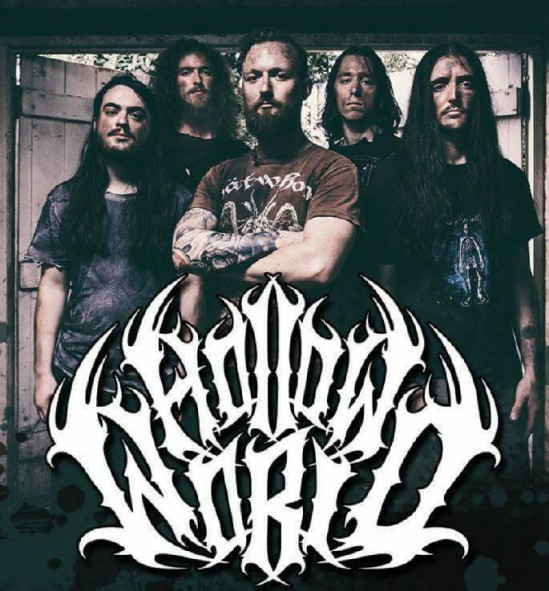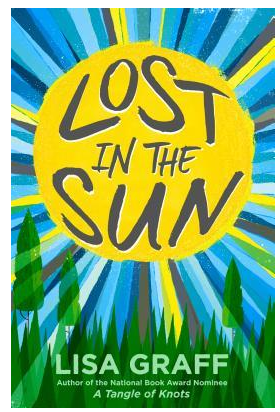A spectacular leap into history and a stunning drive, the 2000 km long Kolyma Highway is also known as the Road of Bones, because the skeletons of the gulag prisoners who died during its construction were used in many of its foundations.
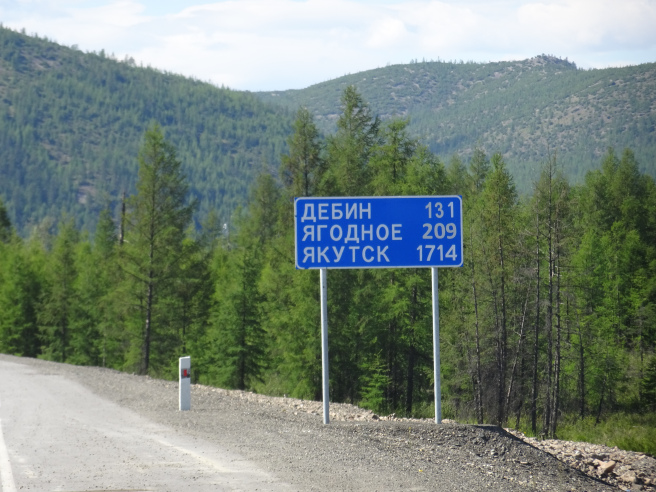 Only 1714 km left until Yakutsk!
Only 1714 km left until Yakutsk!
This highway runs from the coast of the Pacific Ocean to the Lena river and has enabled Soviet Russia to populate extremely remote areas with terribly harsh weather conditions, that were rich in coal, gold, tin, and other minerals.
 A Kamaz truck and a rusty Soviet sign, somewhere along the highway.
A Kamaz truck and a rusty Soviet sign, somewhere along the highway.
You hardly see any passenger’s vehicles on the Kolyma Highway. A few vans perhaps, but mostly trucks: heavy, robust, Soviet born Kamaz trucks that transport industrial goods, or food products for the remote villages.
The road is in good condition but it’s a dirt track in most sections. Every truck is followed by a huge cloud of dust, which makes the driving highly challenging when you’re following one or trying to overtake it.
Distances between towns are huge, and it is common to drive for many hours and not see a soul or a house.
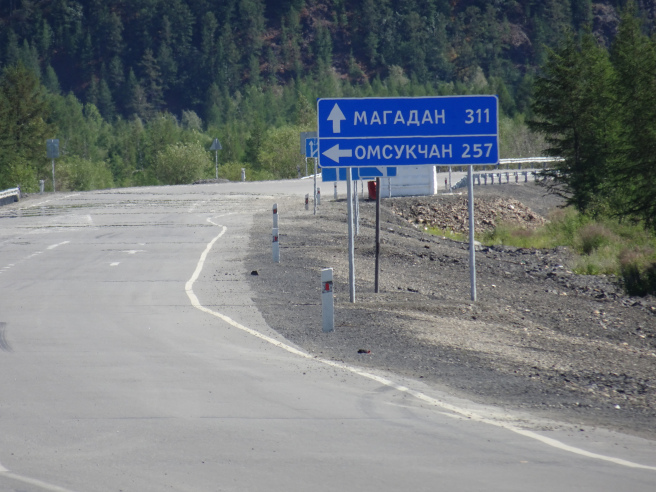 Every now and then, an intersection with another road, leading to a small town a 257 km further West.
Every now and then, an intersection with another road, leading to a small town a 257 km further West.
I’m not really sure why our driver kept a gun within reach. Protection against bears, brigands, or both perhaps?
 Our driver had a gun next to the gear stick.
Our driver had a gun next to the gear stick.
Every now and then, a rusty sign; an abandoned village; a little chapel at the side of the road. Or a little café open 24 hours that serves meat patties and mashed potatoes.
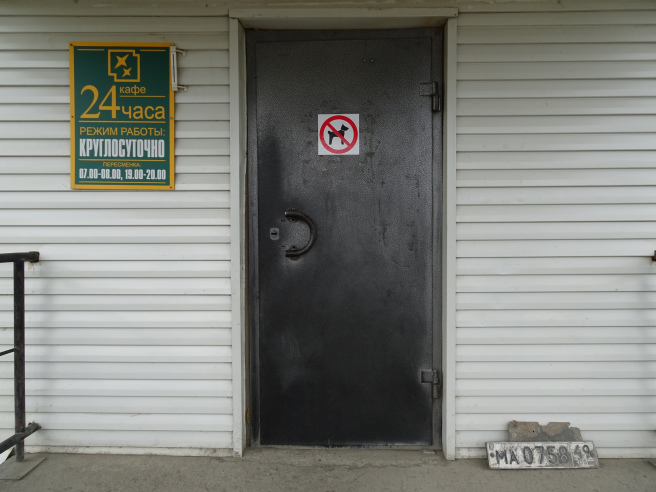 A cafe on the Kolyma Highway.
A cafe on the Kolyma Highway.
I was there in July 2016 and travelled on the Kolyma Highway for 1090 km from Magadan until Ust-Nera, where I took an Antonov plane to reach Yakutsk.
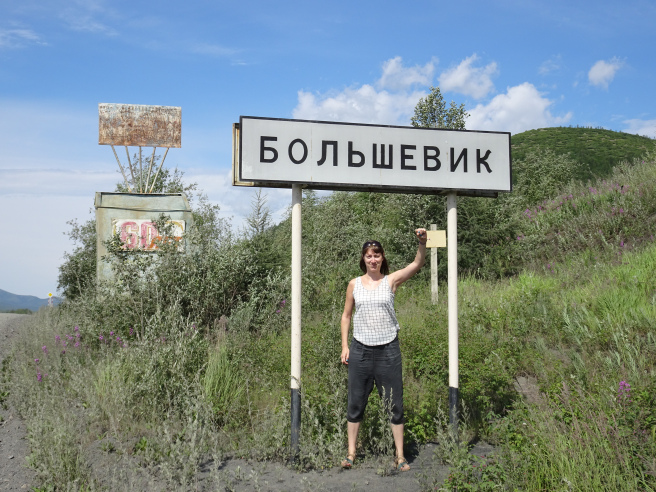 A village called Bolshevik!
Advertisements
Share this:
A village called Bolshevik!
Advertisements
Share this:
